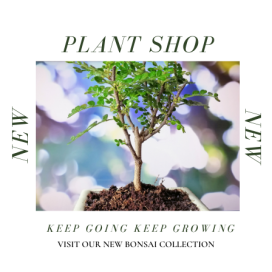By Georgiana Tufeanu, Social Media Manager | Photographer | Graphic Designer, Mentor in SIM’s Community
If you have a business idea and you want to advertise it on the web, now is the best time. How? Building your online presence and creating brand awareness.
Each social platform requires different types of content. But all of them have one thing in common: the quality standards are constantly rising.
You might feel invaded by so much information and sometimes intimidated by such high-quality standards. But not to worry! This article will discuss proper actions to take no matter when you find yourself from beginner or experienced.
You will need to create engaging content for your clients using photography and video but also other graphic elements. So we will discuss how to communicate visually with your target audience.
Where to post and for whom?
Don’t forget – you’re creating content for your audience so understanding who it is a crucial step. In which social platform do they spend their time and what is your purpose?
Let’s analyse a few steps to help you take informed decisions.
Define your audience needs
Depending on the type of product or service you sell or promote, identify the meaningful social platform. If it is a Business to Client, the content and objectives are different from Business to Business.
What kind of questions are asked on review pages or Facebook groups? Where does your audience read or watch news about the market? Analyze the following aspects:
Demographics (gender, age, location (i.e. urban or rural) and marital status):
a. depending on your target audience gender you should consider certain color palette and graphic elements.
b. In the text, adapt your tone of voice for the audience age group (e.g. if you sell teenager clothing you shouldn’t talk in formal language ☺).
In which way can your business and products be of their use? Think about what you offer extra in comparison with your competition.
By understanding all of these aspects, it will be easier for you to deliver a tailored message for the interested audience. For example, if you want to sell products you need to use direct phrases and redirect them to your website and if you don't have one, give clear indication about the purchasing process.
Visual elements
This two questions will help you find your starting point:
1. Which are the visual elements you should focus on when it comes to a brand’s identity?
The answer: brand, colour palette, photography, font and style.
Start by building a mood-board of your brand (i.e. a physical or digital collage of visual materials that evoke a certain style or concept).
Analyse the market, the competition and define a strategy. Collect information such as: colours, images and fonts that you like and resonate with your audience. After you choose all the crucial elements and put them together, the mood-board will provide you a bigger picture of your brand.
Which are the predominant colours that relate to your activity? Choose 3 or 4 and consider using them in everything that you will do on your profiles. Remember, consistency and homogeneity on any social media page is key!
2. What do you want to obtain by posting the content on a specific platform?
Do you want to create brand awareness, to convert, do you want your followers to click on a link that sends them to your website?
Tailor your content always considering these two elements.
“Lights, Camera, Action!”
Now let’s get practical! If you want to describe your services or products you must tell a story about it. Remember that photography and video dominate the digital world!
If you want to personally take care of the photography content, you have 2 possibilities: either use stock photography or do it yourself:
Here is what you will need to for a simple photography studio at home:
- a table or chair
- a roll of matte paper or fabric (choose the color that will fit with the subject and place it over the table or chair to simulate a studio effect)
- a powerful cold light (use a regular lamp or order a professional light)
- tracing paper (you want it in front of the light in order to diffuse it and avoid hard shadows)
- a white cardboard sheet (placed near the light, it will reflect it onto the subject)
- paperweight
Consider also using the natural light by placing your set-up near a window. Don’t forget to be creative and have fun!
Let me guide you through a theoretical example. Let’s imagine someone wants to open an indoor plant business.
Here are some examples of visuals that would fit social platforms like Instagram, Facebook, Pinterest or Linkedin:
1. Picture taken having a screen in the background (it works excellently when you’re filming close-ups of your subject as well!)

2. The same picture edited in Canva (www.canva.com) using predefined templates. Use always the same fonts (max 2 or 3) and style. And don’t forget each social platform requires you to format to different dimensions so chose them in the beginning of the process.

3. Take a picture of your subject with a white background. Go on https://www.remove.bg/ to crop the subject. Use it in a creative way with a template of your choice on Canva or build one in Photoshop.

How often to post?
The algorithms of social media requirements are just another aspect to consider. For more visibility and brand awareness, on Instagram for example, 4 posts a day and more than 7 Stories is the minimum!
But I suggest equilibrium is key. You don’t want to overwhelm your follower’s feed with too much content, but also you should never let them forget about your activity – posting once a week will not bring results.
Final remarks
Perseverance and creativity are keys before starting any online project. Be prepared, define the concept and consider all the aforementioned information to create a solid start. Program your posts at least 2 weeks in advance (it will help you avoid being overwhelmed with too many tasks and requests).
Don’t get attached with the first content you create, be flexible! There’s always room for improvement. Depending on the feedback, be ready to tailor the content in order to have the highest possible outreach!